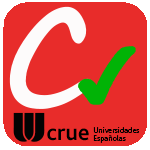Title
Learning periodic skills for robotic manipulation: Insights on orientation and impedanceOther institutions
Università degli Studi di Trentohttps://ror.org/02e2c7k09
Version
Published version
Rights
© 2024 The AuthorsAccess
Open accessPublisher’s version
https://doi.org/10.1016/j.robot.2024.104763Published at
Robotics and Autonomous Systems Vol. 180. N. art. 104763, 2024Publisher
ElsevierKeywords
Learning from demonstrationLearning periodic skills
Riemannian manifold learning
ODS 9 Industria, innovación e infraestructura
Subject (UNESCO Thesaurus)
http://vocabularies.unesco.org/thesaurus/mt5.45UNESCO Classification
Computer scienceAbstract
Many daily tasks exhibit a periodic nature, necessitating that robots possess the ability to execute them either alone or in collaboration with humans. A widely used approach to encode and learn such ... [+]
Many daily tasks exhibit a periodic nature, necessitating that robots possess the ability to execute them either alone or in collaboration with humans. A widely used approach to encode and learn such periodic patterns from human demonstrations is through periodic Dynamic Movement Primitives (DMPs). Periodic DMPs encode cyclic data independently across multiple dimensions of multi-degree of freedom systems. This method is effective for simple data, like Cartesian or joint position trajectories. However, it cannot account for various geometric constraints imposed by more complex data, such as orientation and stiffness. To bridge this gap, we propose a novel periodic DMP formulation that enables the encoding of periodic orientation trajectories and varying stiffness matrices while considering their geometric constraints. Our geometry-aware approach exploits the properties of the Riemannian manifold and Lie group to directly encode such periodic data while respecting its inherent geometric constraints. We initially employed simulation to validate the technical aspects of the proposed method thoroughly. Subsequently, we conducted experiments with two different real-world robots performing daily tasks involving periodic changes in orientation and/or stiffness, i.e., operating a drilling machine using a rotary handle and facilitating collaborative human–robot sawing. [-]
Funder
Comisión EuropeaGobierno Vasco
Gobierno Vasco
Program
Horizon-RIAElkartek 2022
Elkartek 2023
Number
101136067KK-2022-00024
KK-2023-00055
Award URI
https://doi.org/10.3030/101136067Sin información
Sin información
Project
INteractive robots that intuitiVely lEarn to inVErt tasks by ReaSoning about their Execution (INVERSE)Producción Fluída y Resiliente para la Industria inteligente (PROFLOW)
Tecnologías de Inteligencia Artificial para la percepción visual y háptica y la planificación y control de tareas de manipulación (HELDU)
Collections
- Articles - Engineering [753]
The following license files are associated with this item:






















